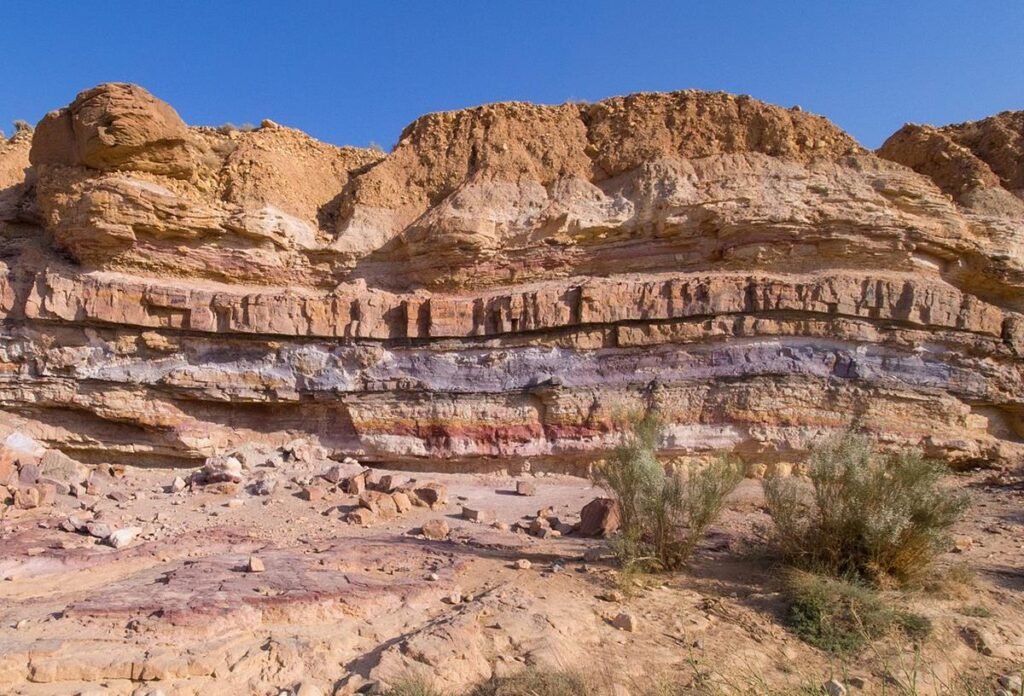The principle of original horizontality states that sediments that form sedimentary rocks are deposited nearly flat, influenced by gravity. This basic principle of geology implies that sedimentary rock layers are also horizontal or nearly horizontal when they form.
It therefore goes without saying that any deformation, be it folding, tilting, displacement, or movement of sedimentary rocks, happened after sedimentation and lithification, not before.
Nicholas Steno (1638-1686) proposed the principle or law of original horizontality after observing how sediment deposition happened.
Steno was a Danish anatomist, geologist, and later turned priest. He also formulated other principles of geology like lateral continuity, superposition, and crosscutting relationships, all important in stratigraphy and relative dating and stratigraphy.
The original horizontality principle helps geologists and other Earth scientists know the order in which past events happened, i.e., relative dating. From this law, we also learn that the earth is dynamic, not static, and that various forces act on it.

Discovery and examples
Nicholas Steno, born Niels Stensen, postulated the law of original horizontality by observing how sediments settled in a basin. He observed that sediments will always be flat or nearly horizontal under gravity.
From his observation, Steno concluded that sedimentary rock layers were also horizontal or nearly flat at the time of their formation, just like sediments.
Tilting, faulting, folding, or any deformation on sedimentary rock layers happened after the deposited sediments had lithified or cemented, not before.
If deformations happened before the sediment had lithified or hardened, the deformed rock layers wouldn’t be preserved as the sediments would flow or move under gravity.
A simple example to demonstrate the law of original horizontality is pouring plastic polymer melt with different colors on a surface, one after the other, allowing time for each layer to solidify before pouring the next one. Each polymer melt layer will spread outwards, forming nearly a flat surface, before it solidifies.
Any deformation, such as curving, bending, or breaking of the solidified plastic polymer layers, will occur after they solidify, not before.
Why is the principle of original horizontality important?
Applying Steno’s law or principle of original horizontality will help you know the sequence of past events (relative dating).
For instance, by studying deformed sedimentary rock layers, you can deduce that the folding, faulting, mountain building, and other Earth movements happened after these rocks formed. You can deduce more if you apply other relative dating principles like superposition, cross cutting relationships, principle of inclusions, etcetera.
Also, the original horizontality principle helps us appreciate the dynamic nature of Earth. Processes like erosion, folding, tilting, faulting, and others that deform or remove the initially flat rock layers are evidence that Earth is dynamic, not static.
Last but not least, understanding that the earth is dynamic could be the impetus behind the discovery of plate tectonics, as scientists and geologists wanted to understand how the earth deforms.
Instances where original horizontality law may not apply
This principle assumes that all sedimentary rocks form at a nearly flat orientation. However, in some scenarios, these rocks may form at an inclination without any deformation happening.
For instance, cross-beds can form at an inclination angle as friction prevents coarser sediments from slithering downslope, provided they haven’t exceeded the repose angle. The repose angle is the largest angle sediments can reach before sliding downslope.
Another scenario is the deposition of sediments in an initially tilted rock layer, so long as their angle of deposition doesn’t exceed the repose angle.
Finally, rock layers that pinch or wedge can appear inclined at a sight angle. Again, the inclination isn’t due to deformation.
